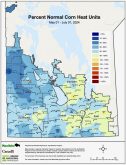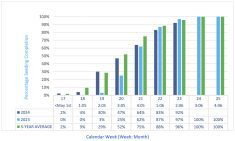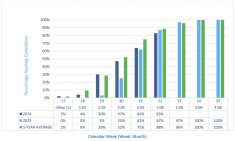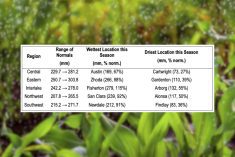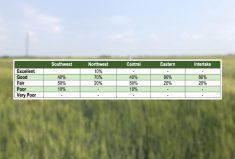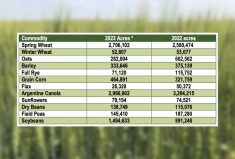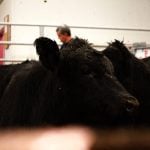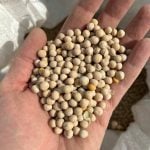While crops in Manitoba remain in relatively good shape, the province’s July 18 crop report stressed that soil moisture reserves are inadequate to sustain those crops unless significant rain comes soon.
Parts of the province received some rain with Elie, located in the central region, getting the most at 29.5 millimetres. A numbers of areas saw nighttime temperatures fall to near 0 C, with a few reports of light frost in the northwest.
Of the cereals, the winter crops continued to dry down, with some farmers applying pre-harvest herbicide. Manitoba Agriculture said the fall rye and winter wheat harvests could start within 10 days.
Read Also

Manitoba boosts stake in cereals centre to $23.5 million
Premier Wab Kinew said the additional project funds will help ‘Trump-proof’ the provincial economy.
The spring cereals had wheat at the late milk to the dough stages. The ag department rated the spring wheat at 90 per cent fair to good in the southwest with 10 per cent poor. In the central, eastern and Interlake regions the wheat was 100 per cent fair to good, while 100 per cent good to excellent in the northwest. The corn ranged from VT tassel emergence to R1 early silking and grew rapidly during the period of warm weather.
Among the oilseeds, Manitoba’s canola was in the flowering to pod filling stages with the most recent cooler weather aiding the crop in extending the flowering stage. The sunflowers were primarily in the R3 early bud elongation stage, with some moving into the R4 inflorescence beginning to open stage.
Meanwhile, the soybeans were in the R2 full flower to early R4 full pod stages, with much of the crop in the R3 beginning pod stage. As for the flax, it was in good condition overall, but dryness was posing a problem.
With the pulses, field peas were in the R4 full pod stage, as few flowers or flat pods remained. The dry beans were in the flowering to setting pin pods stages, with some fungicide application where the potential for diseases is the highest.
The lack of rain has reduced hay yields as the province noted the first cut was 60 to 80 per cent of normal. The quality of the second cut is dependent on there being rain as regrowth has been slow and thin. However, a second cut of hay was taking place in the eastern region and a second cut of alfalfa was progressing in the Interlake.
Pastures continued to struggle with the lack of rain, although grass conditions are fair. Forage growth was being hampered by the dryness and by grasshoppers.



